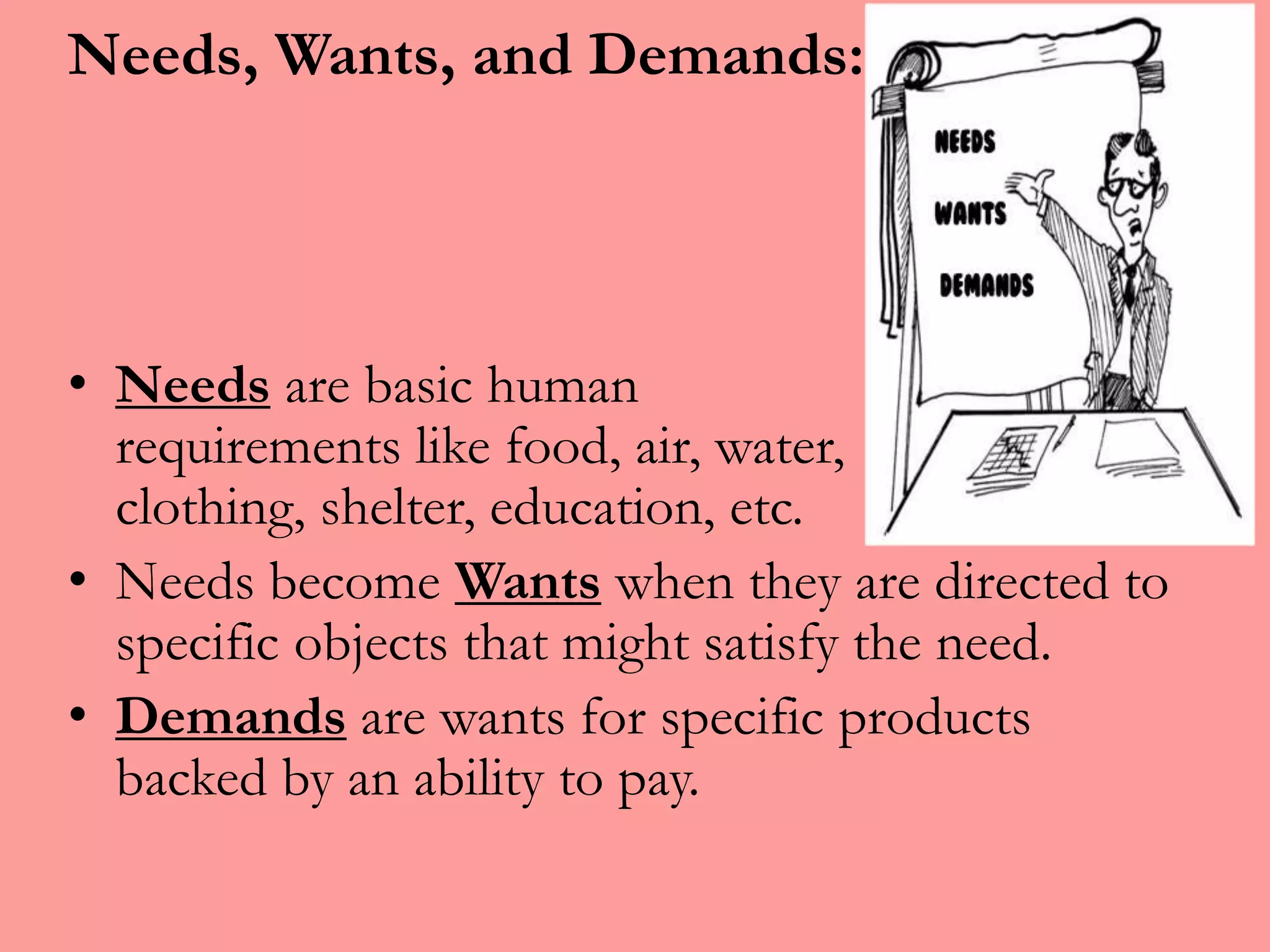Core marketing concepts cover needs, wants, demands, target markets, positioning, segmentation, offerings, brands, value, satisfaction, marketing channels, supply chain, and competition. Needs are basic human requirements, wants are needs directed at specific products, and demands are wants backed by an ability to pay. Marketers segment markets and identify target markets to develop offerings positioned to deliver benefits to target buyers. Companies address needs through offerings and brands, and aim to provide value and satisfaction through quality, service, and price. Marketing channels are used to reach target markets and include communication, distribution, and service channels. The supply chain stretches from raw materials to finished products. Competition includes all actual and potential substitutes considered by buyers.












